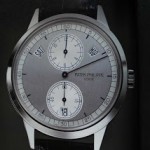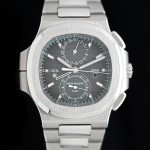In Depth: Inside the Patek Philippe Sky Moon Tourbillon Refs. 5002 and 6002
A rare look at the layers inside the ultra-complication.
Long the most complicated Patek Philippe wristwatch until it was superseded by the Grandmaster Chime ref. 6300 (and ref. 6175), the Sky Moon Tourbillon was arguably the brand’s first uber-complication. It was certainly the brand’s first double-faced wristwatch, continuing a lineage of two-sided grand complications that included the famous watches made for Henry Graves Jr. and James Ward Packard and the more recent Calibre 89.
Boasting 12 complications, it debuted as the ref. 5002 in 2001 and then evolved into the ref. 6002 in 2014. The ref. 6002 has a more elaborately decorated 44 mm case, along with a revamped calendar display, but is otherwise unchanged in functional and mechanical terms from its predecessor, the ref. 5002 that was slightly smaller at 42.8 mm.
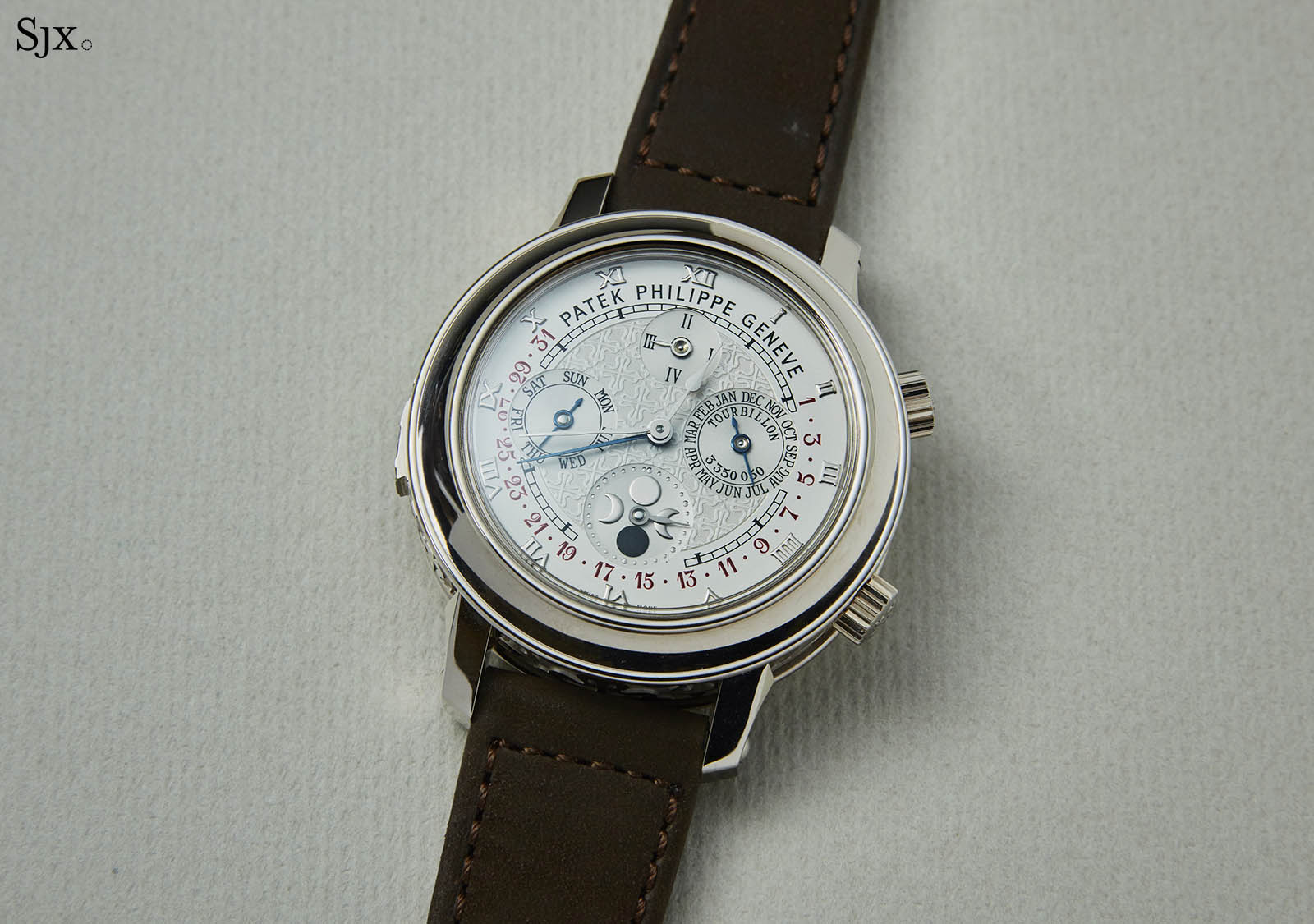
The Sky Moon Tourbillon ref. 5002P, the very first variant of the model
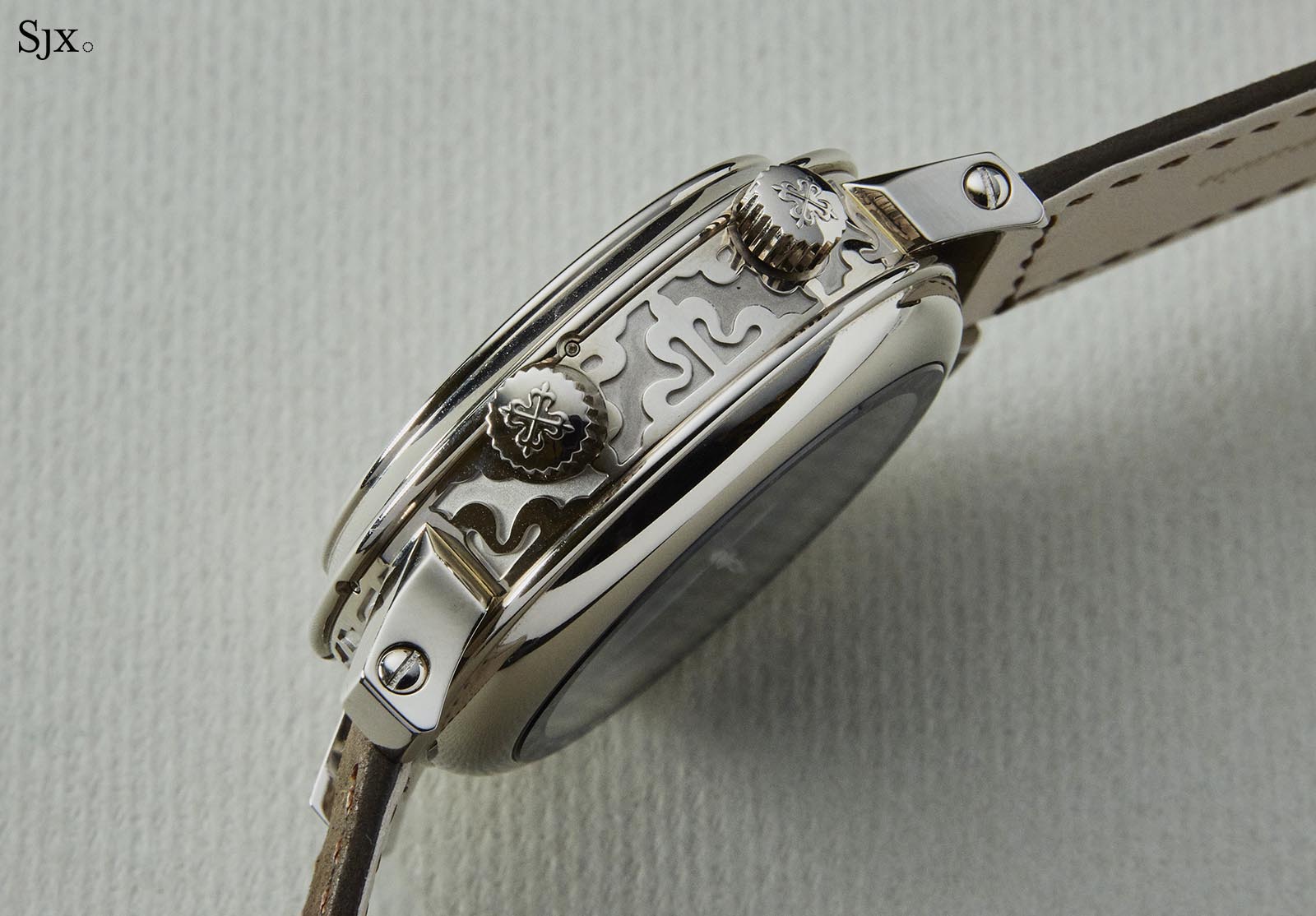
The ref. 5002 featured a relief decoration on the case band done by machine
Despite their comparable sizes, the ref. 6002 is far and away the more striking watch because the fully engraved case and enamelled dial. In fact, the ref. 6002 is probably as over the top as a classically-inclined grand complication can get.
Both references are powered by the R TO 27 QR SID LU CL, a multi-layered movement made up of 705 parts. In a world first, we’ll take you inside the movement and show you each of the layers.

The Sky Moon Tourbillon ref. 6002R that remains in the current catalogue

The ref. 6002 is engraved on almost every surface, even the minute repeater slide
Layered complexity
The movement of the Sky Moon Tourbillon is essentially a combination of three familiar calibres. At its base is the R TO 27, a hand-winding movement with tourbillon and minute repeater launched in 1993.
Add on a perpetual calendar module and the result is a movement with minute repeater, tourbillon, and retrograde perpetual calendar. The calibre has been used in several models over the years, from the ref. 5016 to today’s ref. 5316/50P.
The last piece of the puzzle is the sky chart from the Celestial refs. 5102 and 6102. Unlike the perpetual calendar module that goes over the front of the movement, the sky chart module is added to the reverse of the base movement, resulting in the double-faced display.
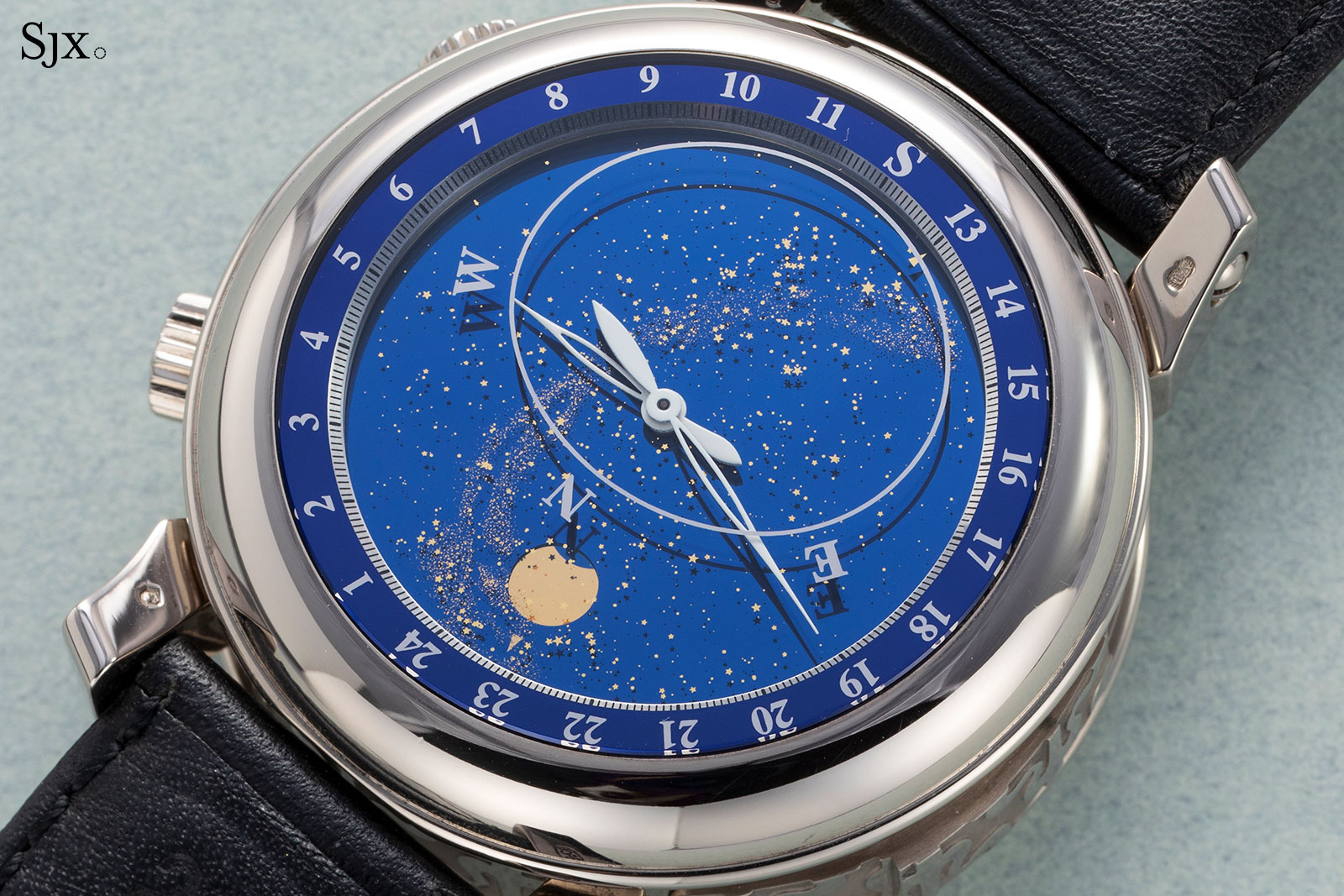
The reverse of the ref. 5002 showing the star chart
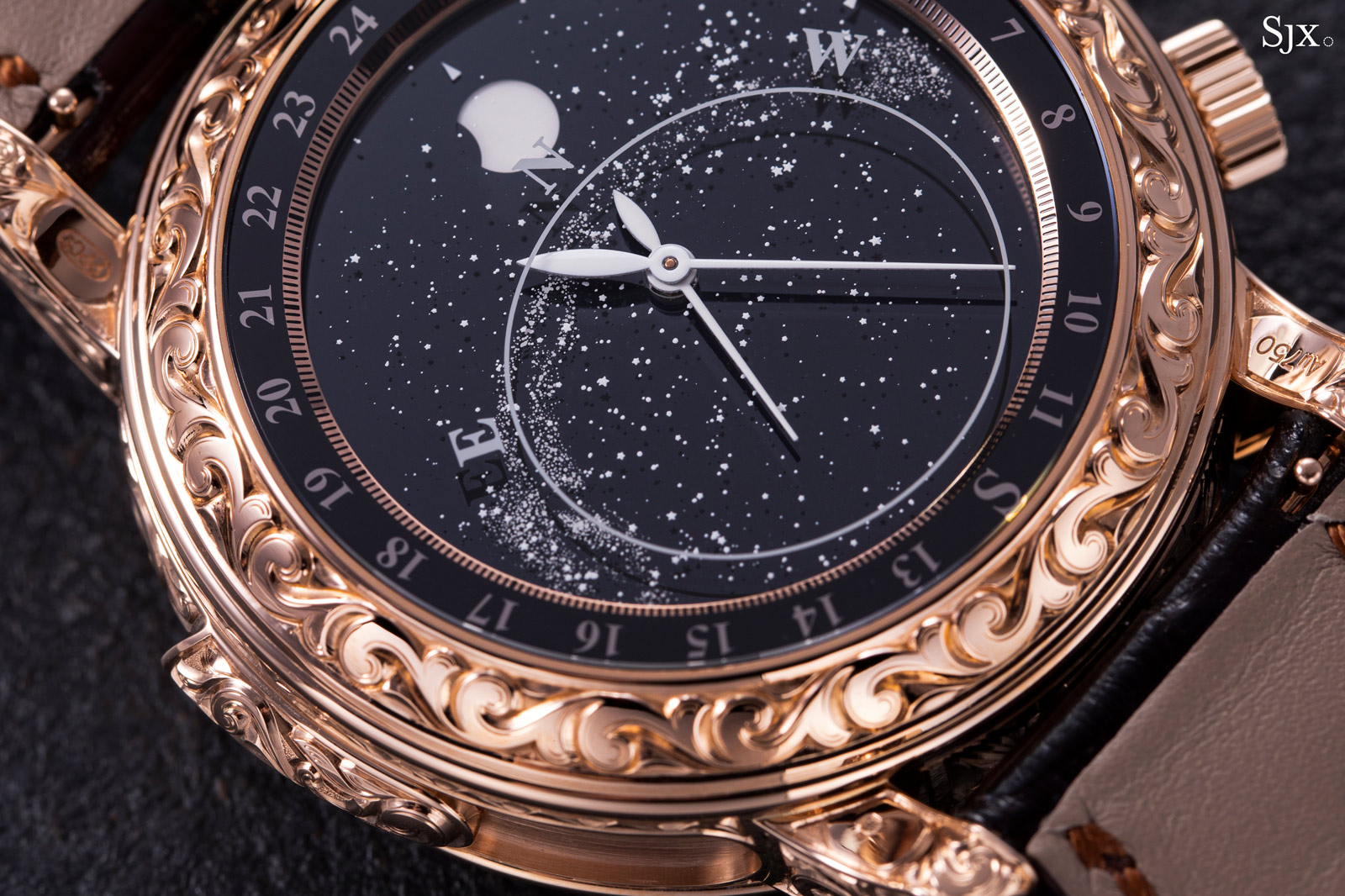
And the back of the ref. 6002, which has the same star chart but inside a larger, engraved case
Thanks to a friend who is a talented, self-taught watchmaker, we get a look inside the different levels of the movement. Each level represents one of the key complications – a fascinating perspective few people outside of the Patek Philippe factory or its service centres can enjoy.
Because the star chart module is on the back, it’s the first thing encountered when the case back is removed. The star chart display comprises a blue disc with a moon phase aperture and above it, a clear sapphire disc bearing the stars of the night sky – both rotate the different speeds to depict the night sky over Geneva.
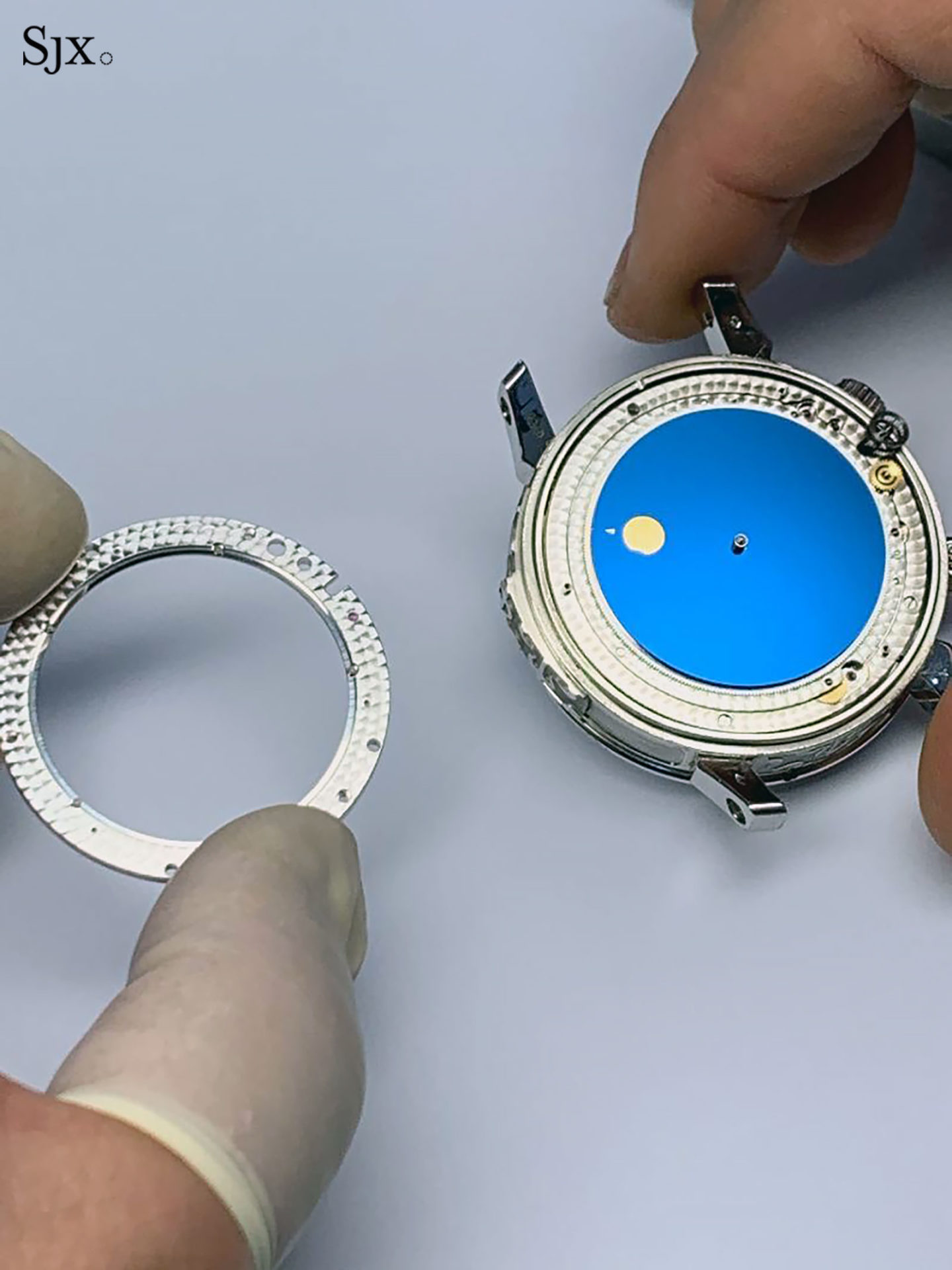
The blue disc with the moon phase aperture, along with two small gears (visible to the right) that drive the rotating discs
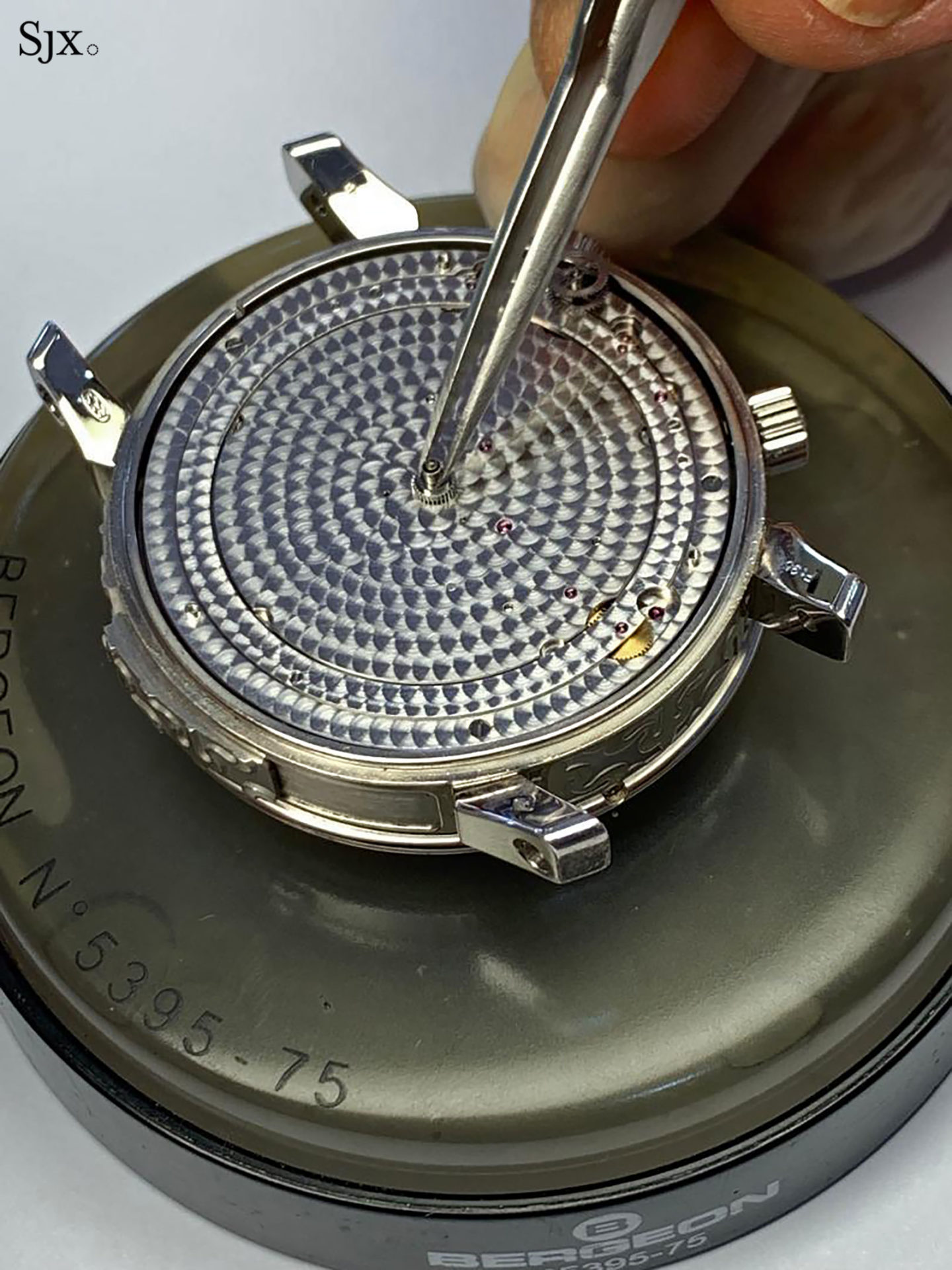
The main plate of the star chart module
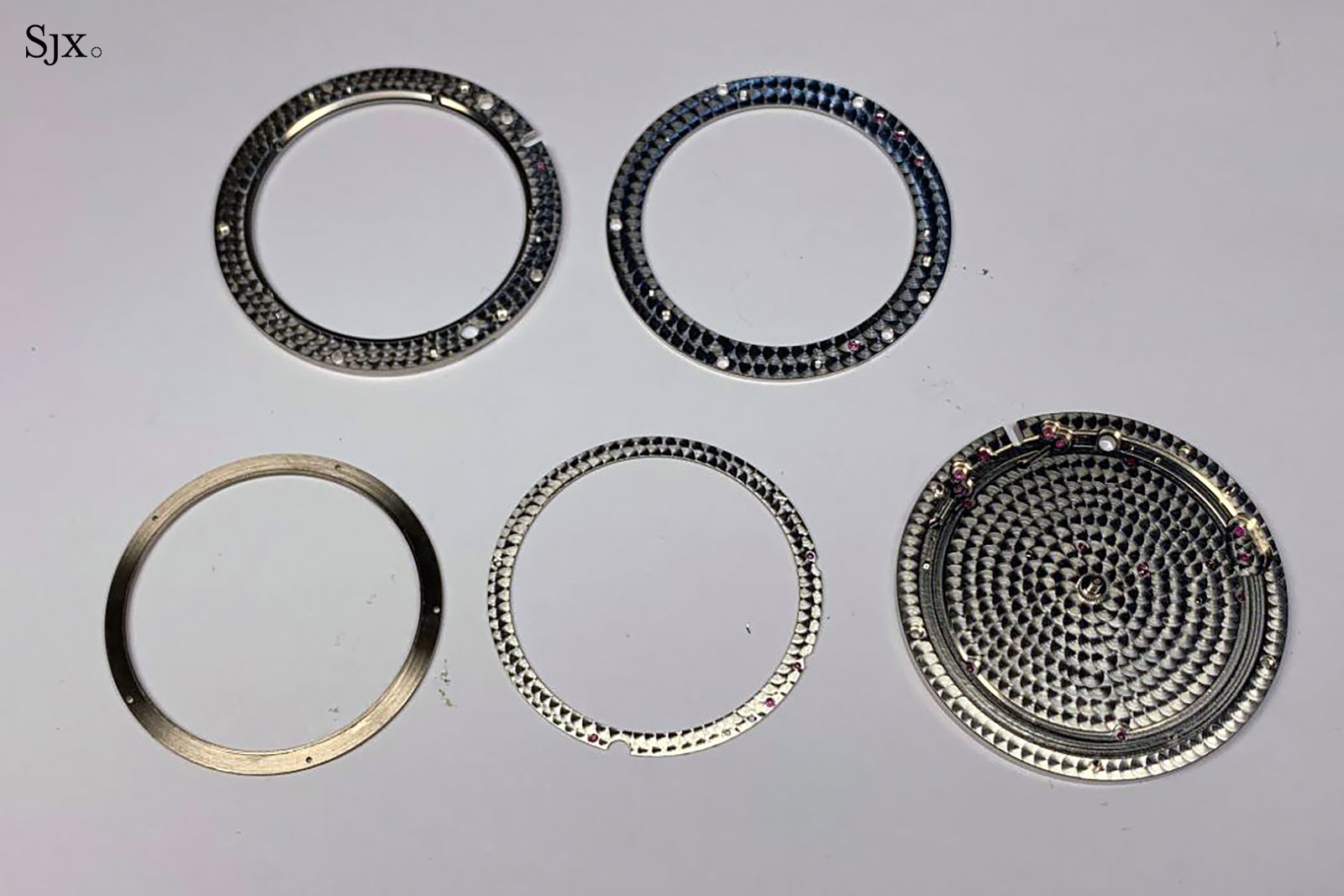
The various rings of the star chart module
Removing the main plate of the star chart module reveals the R TO 27 base movement. Thanks to the centre wheel with wave-like spokes, the calibre is easy recognisable. But here it is constructed on a noticeably wider base plate to accommodate the star chart display.
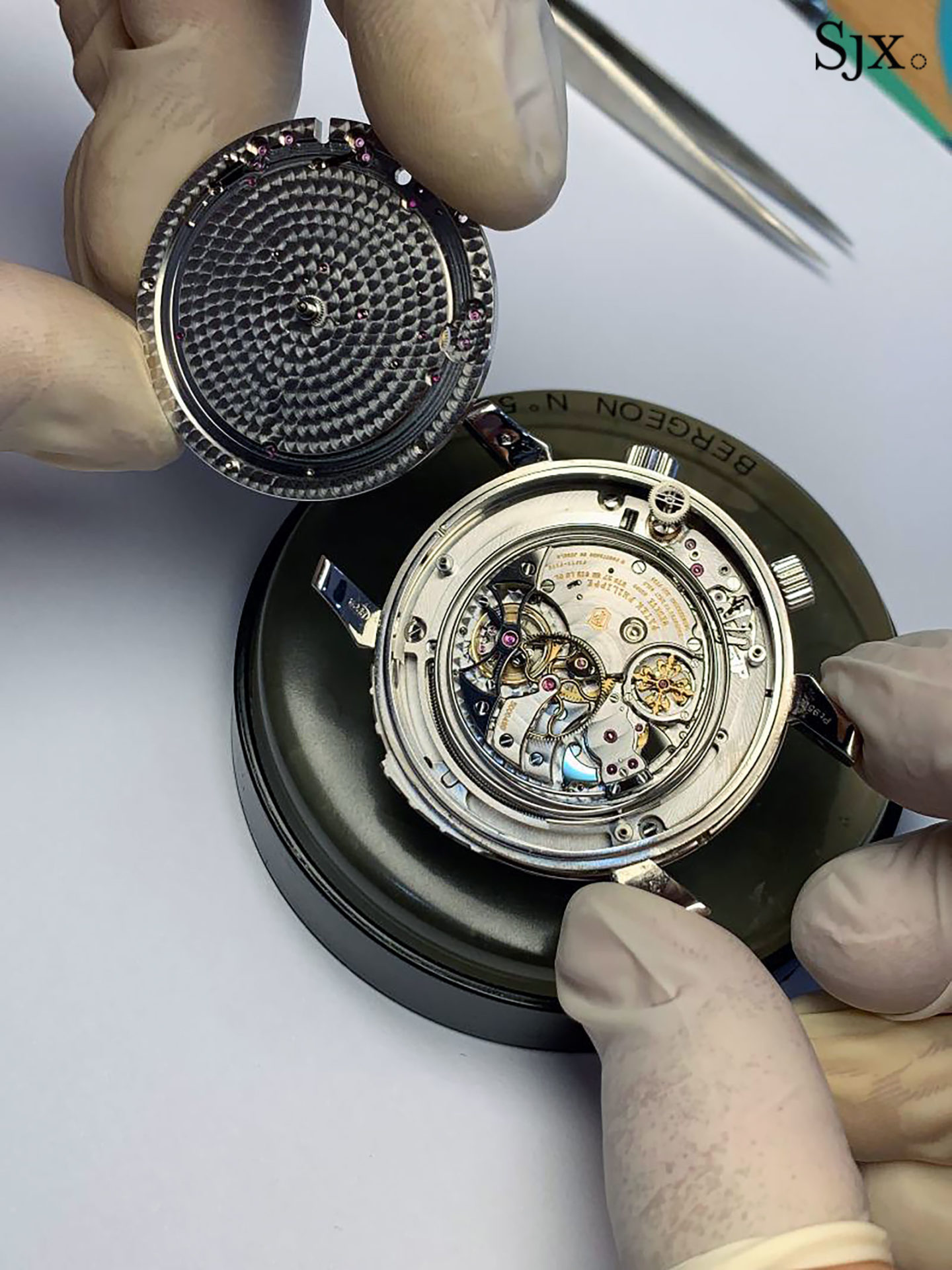
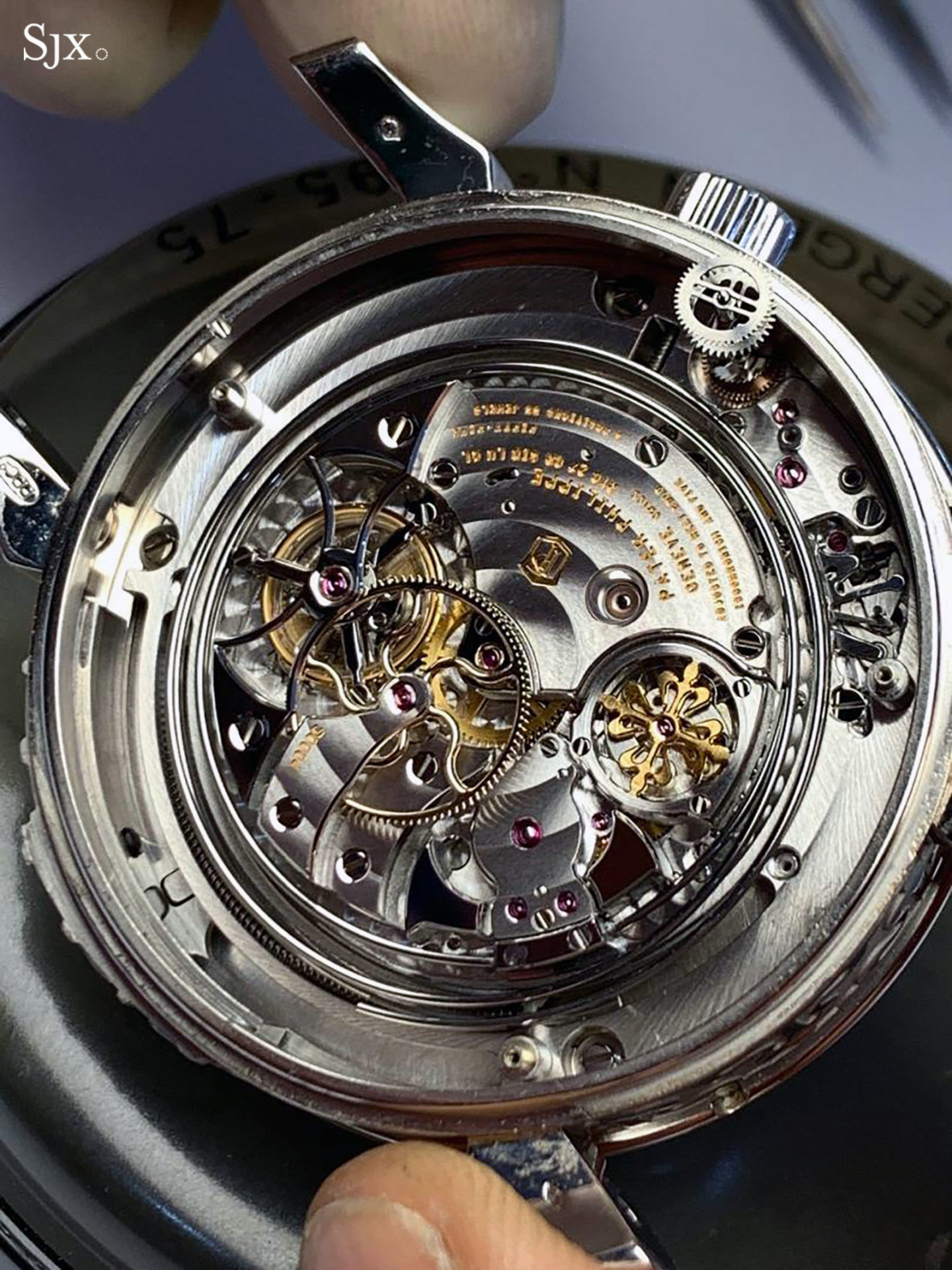
The R TO 27 base movement with the tiny gears for the star chart display and keyless works visible along the right edge
Once out of the case, the two levels of complications on the front are revealed. The topmost layer is the perpetual calendar module that is identical to that found in all of Patek Philippe’s retrograde perpetual calendar models.
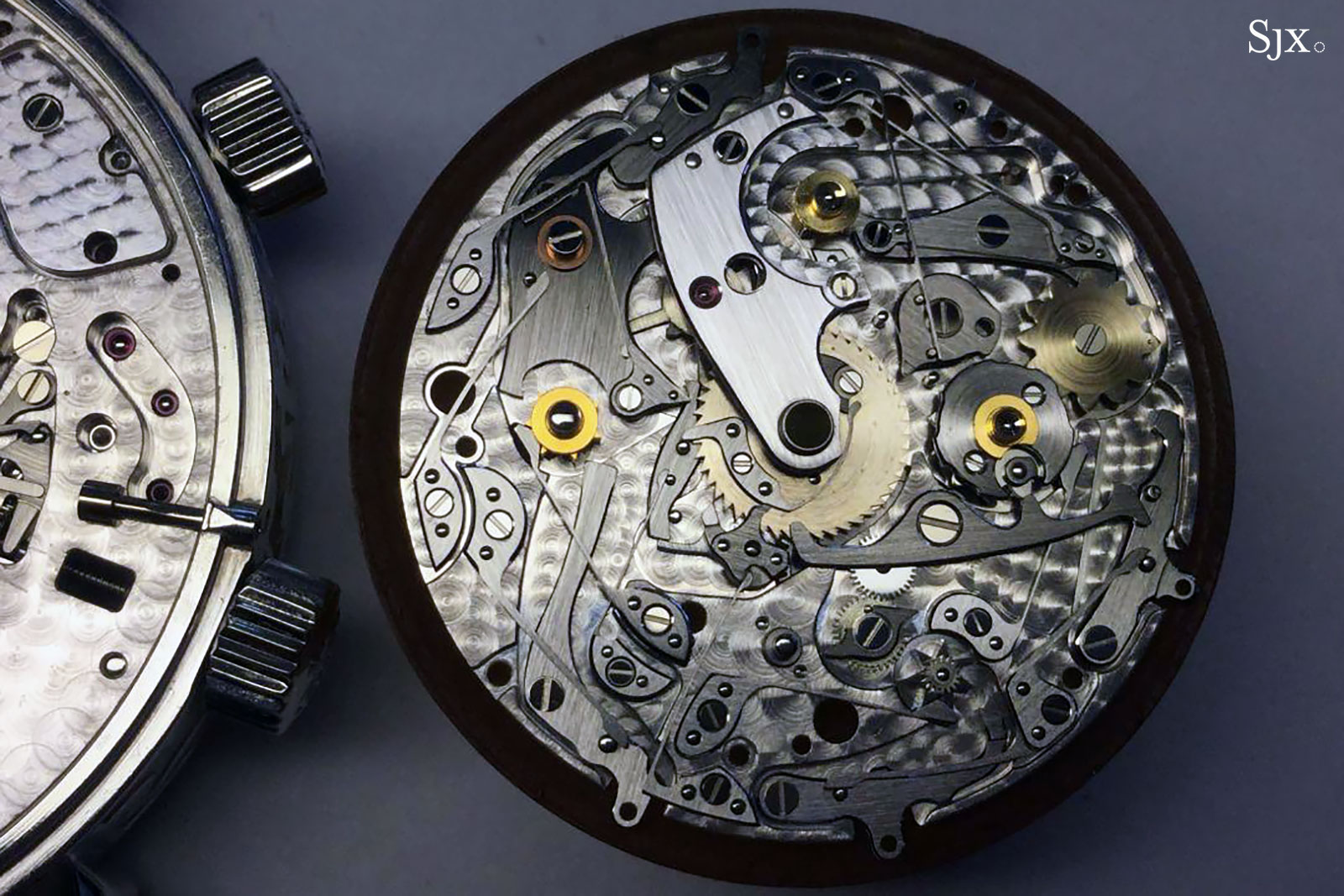
The calendar module with its characteristic levers and springs
Lifting the perpetual calendar module leaves the base movement. Here the enlarged base plate is most apparent, with the strikework of the minute repeater, made up of racks and snail cams, clustered between nine and 12 o’clock.
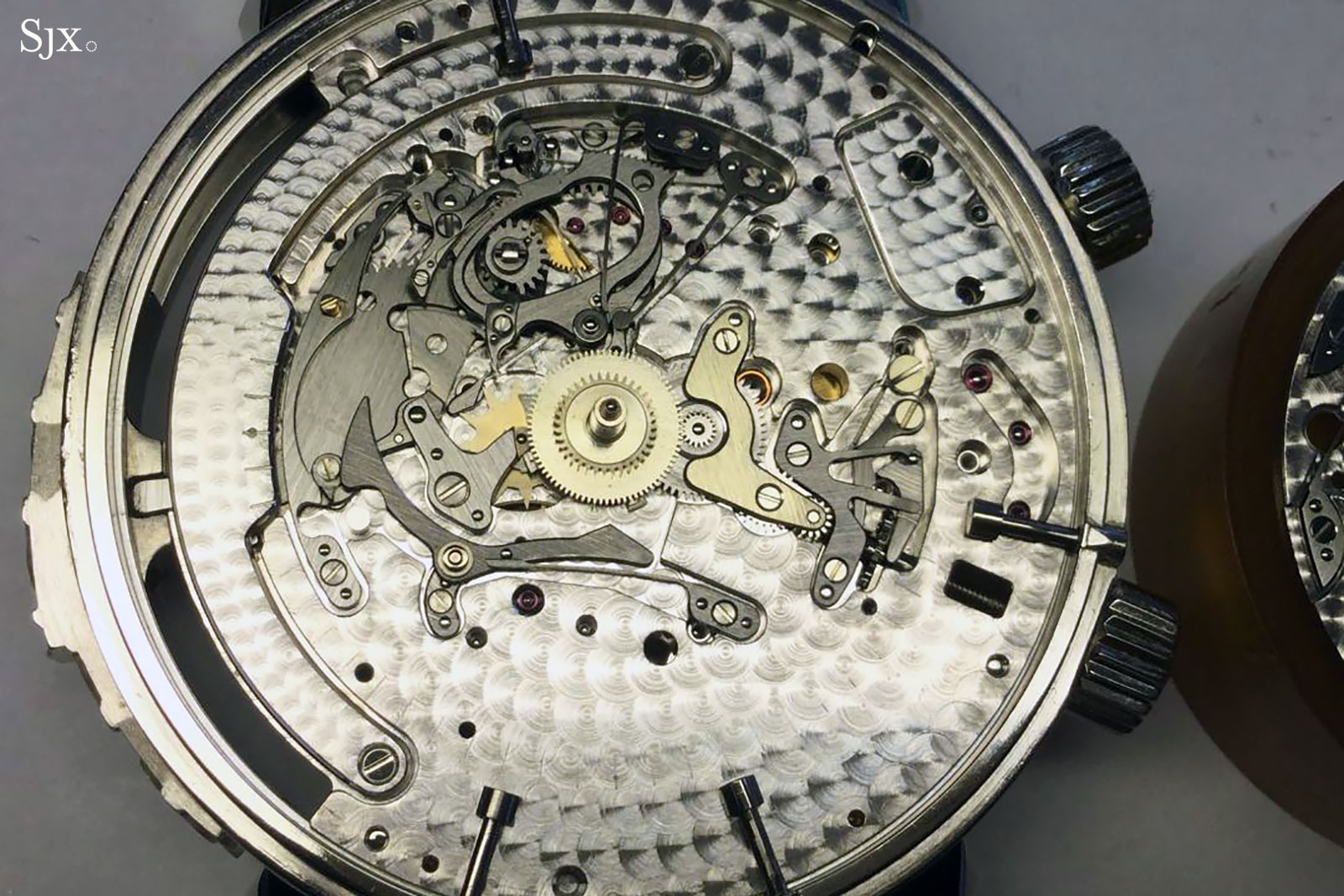
The keyless works seem tiny compared to the size of the base plate because the initial version of the R TO 27 movement was conceived for a 36 mm watch
[For anyone wondering why the watch pictured above was disassembled in the first place: the tiny wheels driving the star chart were not meshing perfectly and required some adjustment. Being an amateur watchmaker, the owner decided to fix the problem himself.]
A philosophy
The construction of the R TO 27 QR SID LU CL illustrates an approach to development long employed by Patek Philippe (and now by many other haute horlogerie brands, like Audemars Piguet with the Code 11.59 Universelle), where a grand complication movement can be broken down into its constituent levels and repurposed to create other movements and models. And the same can also be achieved by remixing complications.
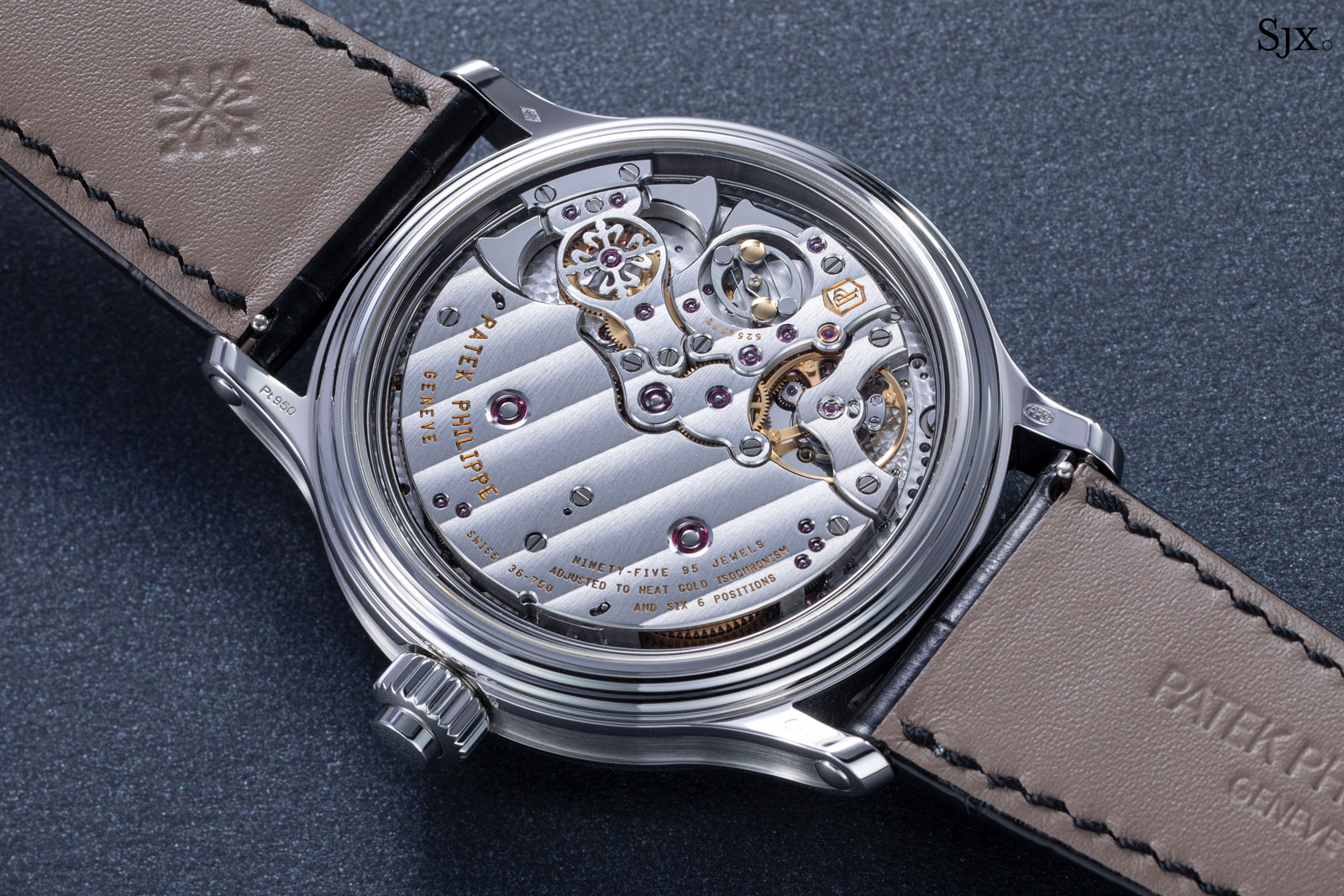
The GS 36‑750 PS IRM
This approach reached its zenith with the cal. 300 of the Grandmaster Chime. That spawned the GS 36‑750 PS IRM of the Grande Sonnerie ref. 6301P, which is essentially the cal. 300 minus everything except the base movement containing the grand-strike complication.
Totalling several dozen if all variations are accounted for, the brand’s stable of highly complicated movements each represent different facets of this philosophy. But it is the R TO 27 QR SID LU CL of the Sky Moon Tourbillon and cal. 300 of the Grandmaster Chime that exemplify Patek Philippe’s incredible strength in industrial haute horlogerie – namely unparalleled ability to develop significant numbers of high-end complicated movements and produce them on an equally significant scale.
Back to top.



